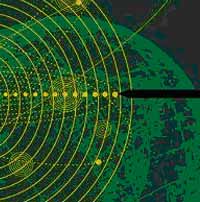I.T. and e-Business Management
![]()
![]()
Business - a World of Change
In the last 20 years business has undergone enormous change due to two I.T. innovations:
- The Personal Computer (PC)
- Availability of effective networking for PCs
These innovations have delivered huge benefits, but have added substantially to the complexity of business operations. Add to this the considerable shift in the business environment, forcing to realign, restructure, and consider alternative approaches to management.
Changes in the business environment include:
- Software has been transformed from simple applications to sophisticated packages.
- The trend to globalisation and a greater emphasis on deregulation, quality and competitive advantage.
- An emphasis on sustainability and strategic alliances.
- Internet commerce encourages cross-border trading and moves into non-traditional areas.
- Quality is promoted as "continuous improvement", encouraging ongoing incremental improvements to business processes.
Changes in the business activity include:
- Investigation of new strucutres together with the reworking of business processes.
- Teams are forcing people to work together.
- Workers expect information to be availalbe when and where they want it.
- Human capital is seen as being important, together with financial capital.
- There is a greater awareness of the importance of customers to the health of a business.
- Management structures are becoming flatter, with greater autonomy given to those close to the impact point of decision-making.
How Organisations Use Information 
The application of I.T. and information in an organisation has a two-fold effect:
- Enhances human activity in routine operations, leading to improved productivity and operational quality.
- Provides important information about business processes, which can then be used to improve it. This can lead to subsequent technology implementations and human activities based upon a deeper knowledge of the processes and their results.
I.T. organisations contain core activities that represent line responsibilities and other activities that discharge various staff responsibilities.
For example, I.T. organisations usually have departments to build applications, operate centralised computer facilities, develop and maintain I.T. plans and strategies. In addition they provide other kinds of technical service to the business.
I.T. organisations also have people or departments to handle staff responsibilities.
For example, there may be an I.T. group that supports computer operations in manufacturing, or a department to support telecommunications in the business, or staff who develop internal technical standards for the firm.
Managing Information Technology
 Today, an I.T. manager must be able to:
Today, an I.T. manager must be able to:
- Understand the goals of the business.
- Organise the migration of equipment into user areas.
- Educate end-users to use new applications.
- Use better applications, relying less on dedicated programmers.
- Consider outsourcing based on financial and managerial considerations.
- Evaluate trends in I.T. in the context of the business.
- Evaluate the impact of new legislation on I.T. activities.
- Consider the I.T. area as a fast changing global workplace.
- Maintain existing computing resource while planning for the future.
- Increase the technological maturity of the business.
- Be involved in business operations such as briefings, meetings and associations.
- Create a vision for the future, sell it to management, and then implement the systems architecture for that vision.
The Demand for Change in I.T. Mangement
 Whether I.T. managers like it or not, change is being thrust upon them by a combination of technological, business and social factors. These include:
Whether I.T. managers like it or not, change is being thrust upon them by a combination of technological, business and social factors. These include:
- People focus – concern is more frequently focused on people and business than on technology. Satisfying user needs continues to be a challenge for CIOs (Chief Information Officers).
- I.T. relationships – I.T. units are judged to be more effective when they report to the business units they serve, than to corporate I.T. executives.
- Cost effectiveness – Business continue to search for methods to justify I.T. cost effectiveness in order to justify the cost of the I.T. group.
- Information dispersal – the trend is that IT acquisition is directed by the business units that use the information. CIOs who attempt to retain control are being forced to transfer IT functions to line managers (or being forced out of the business.
- Business process redesign – the demand for new, innovative applications continues, and is being stimulated by business process redesign and reengineering. Cost is not the only issue – alignment and effectiveness for the business unit are essential.
What do you know? What do you need to know?
For reading and review quesions - this is your chance to discuss answers with your lecturer.


